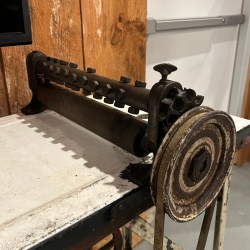This week’s Hackaday podcast has a European feel, as Elliot Williams is joined by Jenny List for a look at the week’s happenings in the world of cool hardware hacks. Starting with the week’s news, those Redbox vending machines continue to capture the attention of hackers everywhere, and in the race to snag one before they’re carted off for recycling someone has provided the missing hardware manual in the form of a wiki. Europeans can only look on wistfully. Then there’s the curious case of life on the asteroid sample, despite the best efforts of modern science those pesky earth bacteria managed to breach all their anti-contamination measures. Anyone who’s had a batch of homebrew go bad feels their pain.
The week provided plenty of hacks, with the team being wowed by [Bitluni]’s CRT-like laser projector, then the many ingenious ways to 3D-print a hinge, and perhaps one of the most unforgiving environments in the home for a piece of robotics. Meanwhile our appetite for cool stuff was sated by an entire family of Japanese games consoles we’d never heard of, and the little voltage reference whose data sheet also had an audio amplifier circuit. Finishing up, our colleague Arya has many unorthodox uses for a USB-C cable, and we have a frank exchange of views about Linux audio.
Give it a listen below and check out all the links, and by all means, give us a roasting in the comments!



















